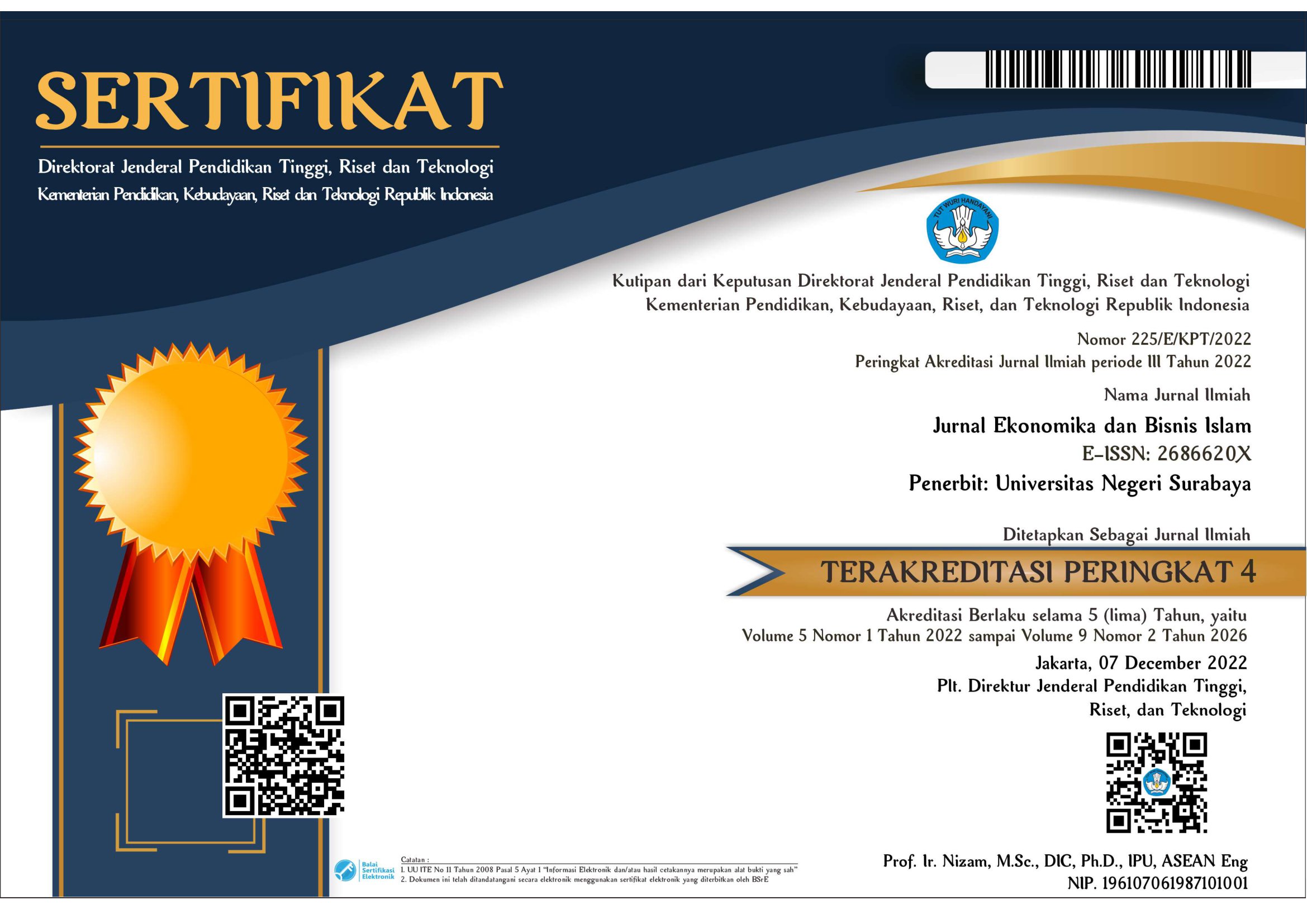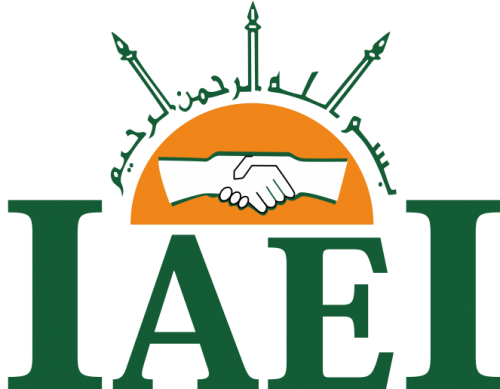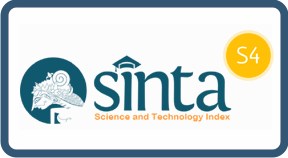Pemberdayaan Masyarakat: Konsep, Peluang, dan Tantangan dalam Perspektif Islam
Keywords:
community empowerment, shadaqah jariyah, mosque prosperityAbstract
Community empowerment is a solution to manage public funds. This article aims to look at the history, basic principles, actors, vulnerable groups, opportunities and challenges of community empowerment through an Islamic perspective. Using a qualitative approach with library research methods, article utilizes the Qur'an and hadith as primary data, as well as other literature such as books and relevant journals as secondary data, then analyzed througj maudhu'i technique. The principle of society in Islam is centered on 3 main principles, namely brotherhood (ukhuwah), the principle of mutual assistance (ta'awun), and the principle of justice or equality. The nature of empowerment is in line with da'wah, it can be done individually (fardiyah), or collectively (jam'iyah), by providing the community with the ability to make changes. The changes referred to in Islam have four characteristics: (1) changes that are collective, not individualistic, (2) non-discriminatory and non-Islamic-centric, (3) in line with God's will, and (4) prioritizing character changes. People who need to be empowered are called mustad'afin, which includes: the needy, the poor, widows, orphans, and people who are struggling in the way of Allah. The community empowerment can be implemented through activities that are religious in nature or activities that are muamalah.
References
Abbandondelo, A., & Nadler, C. (2007). Empowering families to choose quality childcare in New York City. Carl Nadler, 35(3), 542.
Al-Ghazali, M. (1991). Al-Musykilat fi al-Thariq al-Hayah al-Islamiyyah (A. Shiddiq, Ed.). Pustaka Mantiq.
Al-Khatib, M. K. (1953). Khutab al-Rasul. Dar al-Fadilah.
Al-Maraghi, A. M. (1974). Tafsir al-Maraghi (Vol. 1). Dar al-Fikr.
Al-Mubarakfuri, S. (2008). Sirah Nabawiyah. Pustaka Al- Kautsar.
Athiyyah, I. (1984). At Tahrir wa At Tanwir. Dar At Tunisiyah.
Gaus, A. (2008). Filantropi dalam Masyarakat Islam. Elex Media Komputindo.
Habib, M. A., Nisa, K. K., Fatkhullah, M., Ursah, C. R. A., & Budita, A. K. (2022). Sosiologi Ekonomi: Kajian Teoretis dan Contoh Penerapan. Akademia Pustaka.
Hakim, M., & Widjaya, T. (2003). Model Masyarkat Madani. Intimedia Cipta Grafika.
International Labor Organization. (2013). Manajemen Sumber Daya Manusia Untuk Kerja Sama dan Usaha Yang Sukses. Labour Office.
Kh, S., & Johnston, M. (1992). Membina Masyarakat Pembangunan Kasus-Kasus Pengembangan Masyarakat. Yayasan Indonesia Sejahtera.
Lukihardianti, A. (2019, May 12). Masjid di Pelosok Indonesia Banyak yang tak Layak. Republika.
Manzur, I. (n.d.). Lisan al-Arab (Vol. 14).
Miftah, T. (1983). Kepemimpinan dalam Manajemen. Rajawali Pers.
Setyaningrum, N. (2014). Fenomena Pengemis Anak Di Pasar Klewer Surakarta (Studi Tentang Fenomena Akses Layanan Pendidikan Pengemis Anak). SOSIALITAS; Jurnal Ilmiah Pend. Sos Ant, 5(1).
Shihab, M. Q. (1997). Tafsir Al-Quran al-Karim: Tafsir Atas Surat-Surat Pendek Berdasarkan Urutan Turunnya Wahyu. Pustaka Hidayah.
Shihab, M. Q. (2007a). Tafsir al-Mishbah (Vol. 9). Lentera Hati.
Shihab, M. Q. (2007b). Tafsir al-Mishbah (Vol. 5). Lentera Hati.
Shihab, M. Q. (2007c). Tafsir al-Mishbah (Vol. 2). Lentera Hati.
Shihab, M. Q. (2007d). Tafsir al-Mishbah (Vol. 6). Lentera Hati.
Shihab, M. Q. (2007e). Tafsir al-Mishbah (Vol. 11). Lentera Hati.
Sitorus, S. H., Fatkhullah, M., & Julastri, R. (2022). Pemberdayaan Masyarakat Nelayan; Peran dan Kontribusi Dinas Perikanan dan Kelautan. Jurnal Masyarakat Madani, 7(1).
Sugiyono. (2014). Metode Penelitian Pendidikan: Pendekatan Kuantitatif, Kualitatif, dan R&D. Alfabeta.
Syatha, A. B. (n.d.). Ath-Thalibin.
Wibawa, B. A., & Saraswati, R. S. (2016). Perencanaan Pembangunan Masjid Al-Ikhwan Kelurahan Karangayu, Semarang. E-Dimas (Educations-Pengabdian Kepada Masyarakat), 7(1).
Downloads
Published
How to Cite
Issue
Section
License
Copyright (c) 2023 Mukhammad Fatkhullah, Muhammad Alhada Fuadilah Habib

This work is licensed under a Creative Commons Attribution 4.0 International License.
This work is licensed under a Creative Commons Attribution 4.0 International License.
 Abstract views: 2164
,
Abstract views: 2164
, PDF Downloads: 3014
PDF Downloads: 3014














